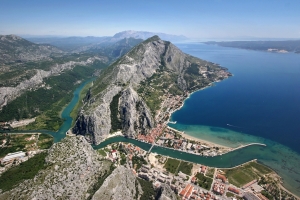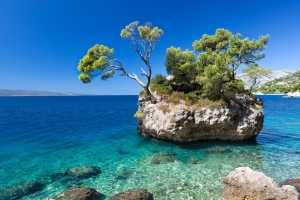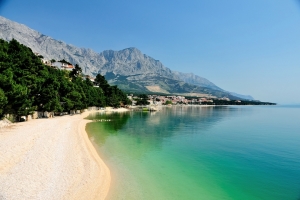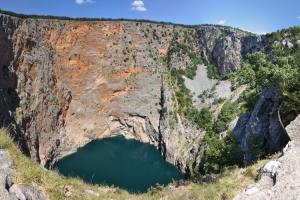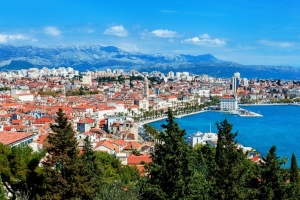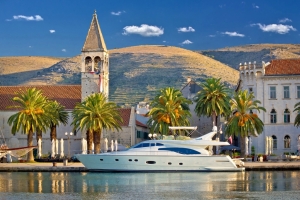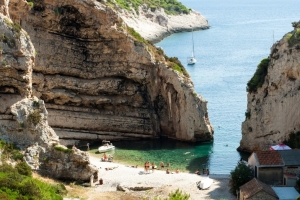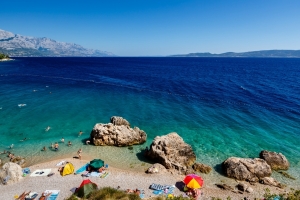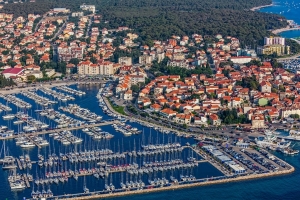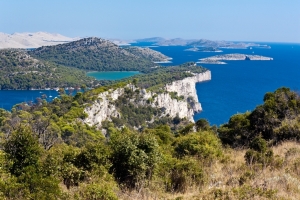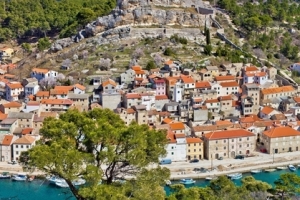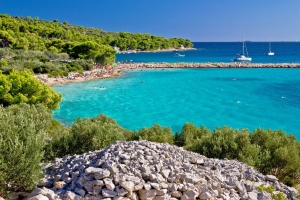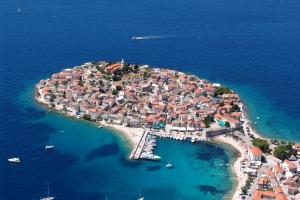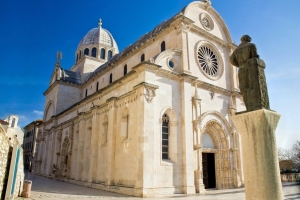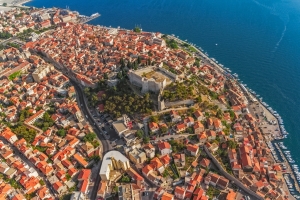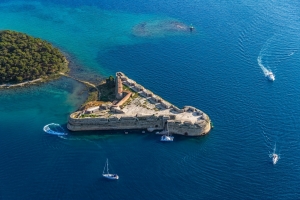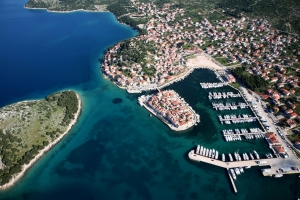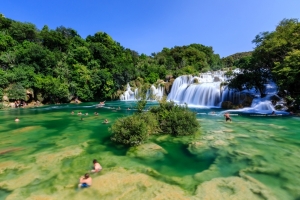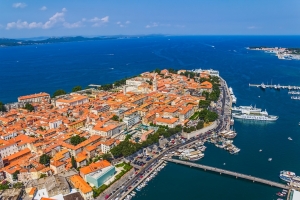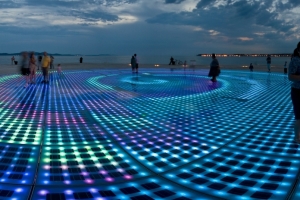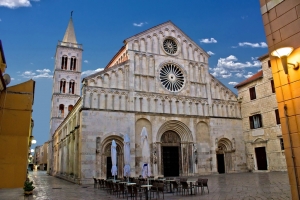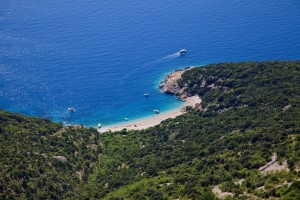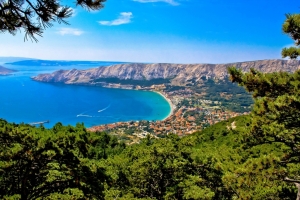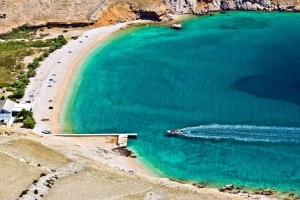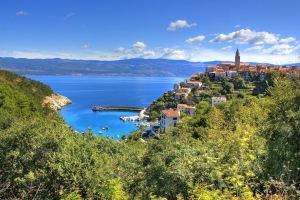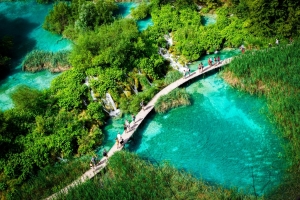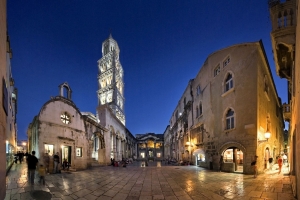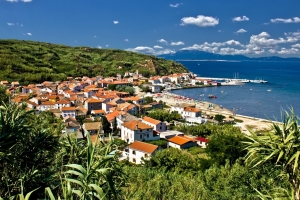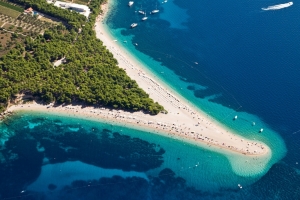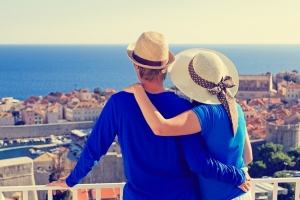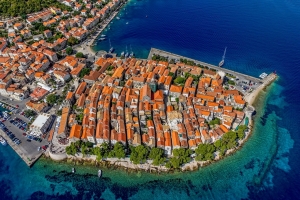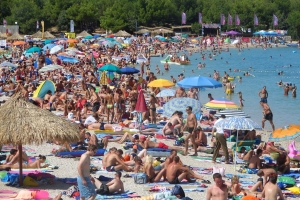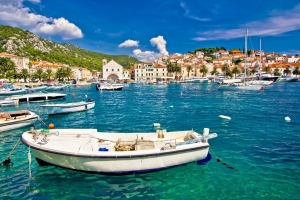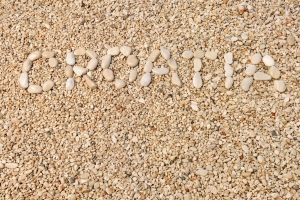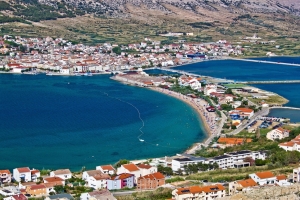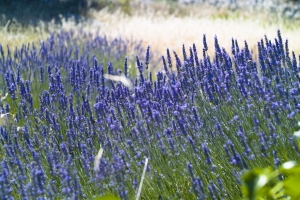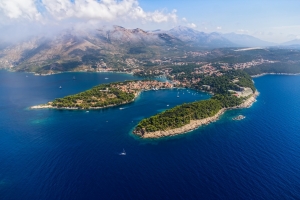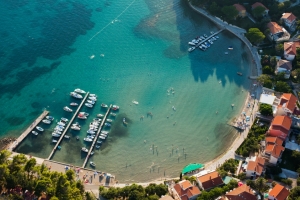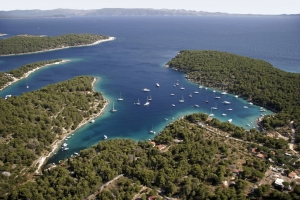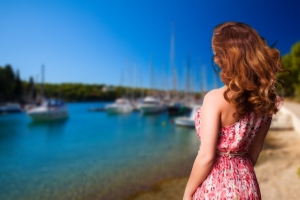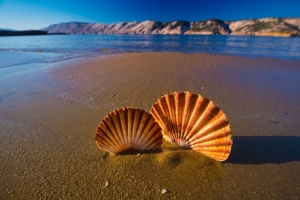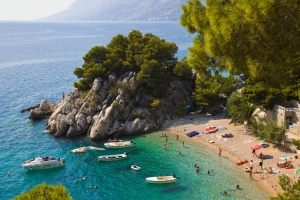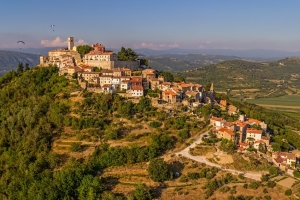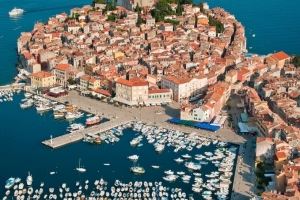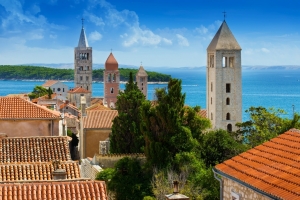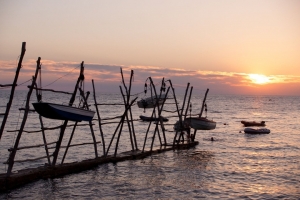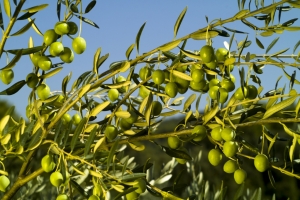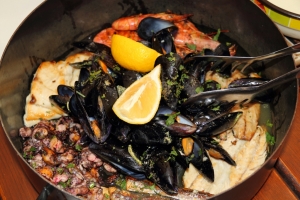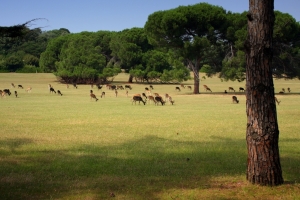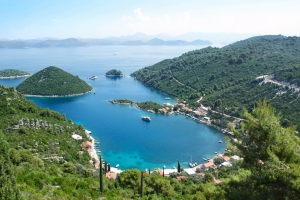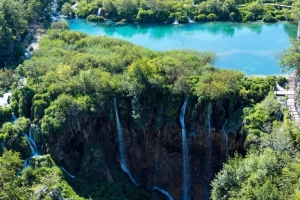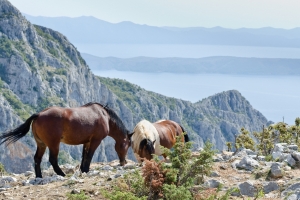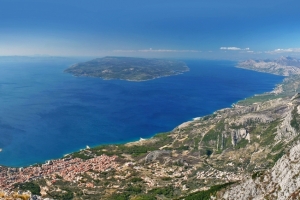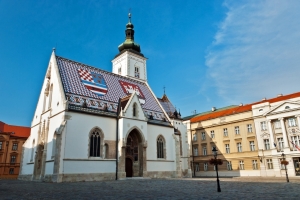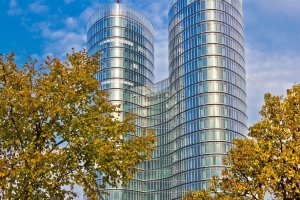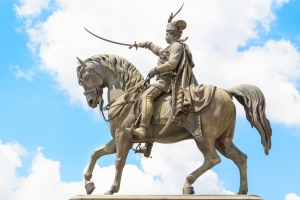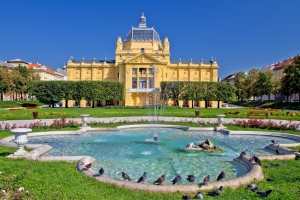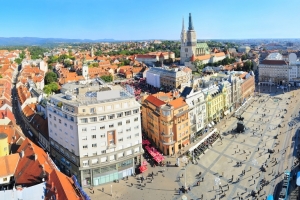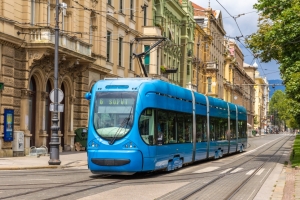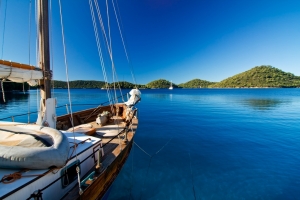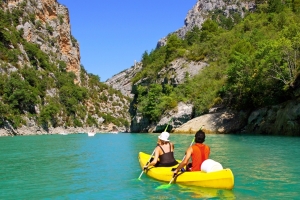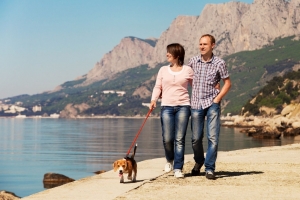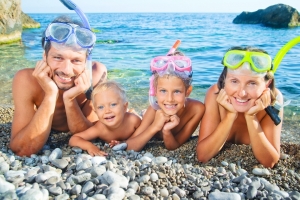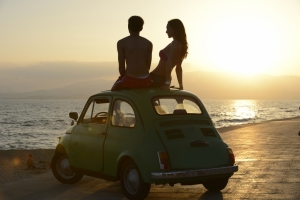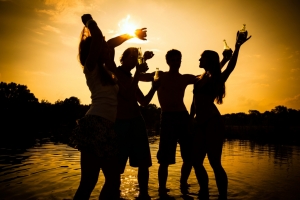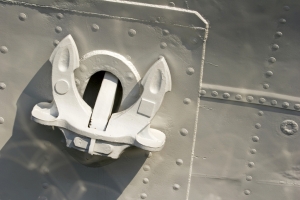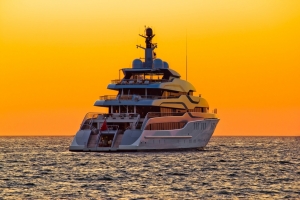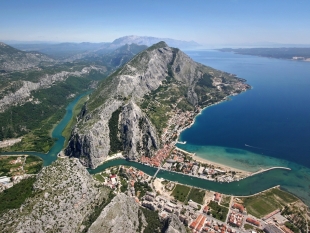


For several years now, Croatia has been high on the list of top destinations for tourists. Until 1995 the country was fighting the Croatian War that eventually brought long-awaited independence from Yugoslavia. In the meanwhile, however, the bitter traces of war have disappeared and a profound change has taken place. So much that the Republic of Croatia was accepted into the European Union on July 1, 2013. Today the sunny country on the Adriatic Sea offers fascinating destinations, a rich ancient culture, lively cities, beautiful beaches and delicious culinary delights. Croatian wine has long been considered the best in the world because the grapes thrive under the Mediterranean sun.
Croatia's Geography and Climate
The Republic of Croatia, with an area of 56,542 square kilometers is about the size of the western German states of Hessen and Baden-Württemberg together. Don't let its size deceive you though- it has a lot to offer both culturally as well as scenically. The country extends from the eastern foothills of the Alps in the northwest to the northeast flowing Danube and to adjacent Montenegro to the southeast. The approximately 1,800 kilometer long coastline of the Adriatic Sea is located in the South. The capital and the largest city of Croatia is Zagreb which has about 800,000 inhabitants. The various parts of the country differ in many respects in climate as well as landscapes. Northern Croatia and Slavonia both find themselves located in the Pannonian Basin which is characterized primarily by its continental climate. The mountain region is characterized by somewhat snowy medium and high mountain ranges whose highest peak is Dinara with 1831 meters. Settled at the foot of the mountain is the city of Kijevo. With a little luck you can observe- in this part of western Europe- rare predators such as wolves, brown bears and lynx. In contrast to the snowy mountains, the coast is dominated by a Mediterranean climate with very hot, dry summers and many sunny days. Off the Croatian coast there are about 1200 islands, from which only 70 are inhabited. The largest islands are Krk and Cres with each being respectively around 406 square kilometers. Other islands of equal tourist importance are neighboring Losinj, Rab and Pag in the Kvarner Bay, as well as, the Dalmatia islands of Brac, Hvar, Vis and Korcula. Due to its many scattered islands, Croatia is a paradise for sailors and boat owners. Bathers also come at their own expense because the Croatian mainland coast and the islands offer beautiful, clean beaches. Many of these beaches have even been awarded with the blue flag. A well-known landmark is the “Golden Horn” or in Croatian, “Zlatni rat”, a fine pebbled beach located on the island of Brac which is often featured on postcards. There is a long naturalist tradition stemming from the socialist times, which has been intensely preserved in Croatian today.
UNESCO World Heritage Site
Croatia has a very long history. Many parts of the country, especially in the south, were already settled before our era by the Illyrians and then later by the Greeks. Thereafter, parts of Croatia belonged to the Roman Empire. This cultural heritage is still visible today, observed in many archaeological sites and museums, but especially in the preserved buildings situated all over Croatia. During this period, Diocletian's Palace in Split and the Roman amphitheater in Pula were built. More recently built, but equally fascinating are the towns of Dubrovnik and Trogir. Also included on the UNESCO World Heritage Site list are St. Jakob's Cathedral in Sibenik and the Bishop's building of the Euphrasian Basilica in Porec's old city. These structures originate mostly from the 15th and 16th Century when parts of Croatia still belonged to Hungary, as well as to the realm of the Hapsburg dynasty. The amazing variety of sacred buildings, which can, for the most part, be found in rough terrain areas is very typical of Croatia. UNESCO protects not only building structures, but also remarkable landscapes. Some areas of Croatia which are valued as natural World Heritage sites include the Stari Gard Plains on the island of Hvar and the geographically largest and by far the most well-worth-seeing national park in Croatia, the Plitvice Lakes.
National and Wildlife Parks
Croatia has a long list of very appealing national and wildlife parks, which are very often connected by a dense network of hiking and cycling trails. Currently, there are eight national parks and eleven wildlife parks. For a country of this size, the is a considerable number! The Plitvice Lakes National Parks and the Krka National Park were both locations for the filming of the Winnetou films. A variety of climbing opportunities exist, primarily in the Paklenica National Park located northeast of the city of Zadar on the Adriatic coast. Also astonishing is the “Blue Grotto” on the island Bisevo by Vis. This cave is a widely accessible and popular tourist attraction today.
Landscapes and Interesting Cities for Tourists
The Istria region is a picturesque peninsula located on the northern Adriatic Sea. Here, the sun shines over 200 days a year and the climate is relatively mild. Especially interesting for tourists are the cities of Pula, Rovinj, Porec, Medulin, Labin, Motovun. Pula is the largest city in Istria and is home to the Archaeological Museum of Istria, an impressive amphitheater, as well as the Temple of Augustus from Roman times. Motovun is a magical, medieval characterized town in the interior of the country, located on a high hill overlooking the river valley of Mirna. It is famous, among other things, for its truffles and its annual International Film Festival. Rovinj, a city nestled on the west coast of Istria, is one of the most beautiful coastal cities of Croatia and is an attractive destination for both nature and culture lovers. The seaside resort of Medulin on the peninsula of Vizula is known for its family- friendly beaches and archaeological digging sites. Another amazing experience is a visit to the Baredine Grotto, a natural monument in Porec.
The Kvarner region includes the mainland and its islands dotting the upper Adriatic coast in the Kvarner Bay. This landscape is especially interesting and attractive for tourists because its location makes the travel from central Europe quick and easy. The most popular and important vacation spots are also found on the great Adriatic islands of Krk, Cres, Losinj, Rab and Pag. First of all, the glamorous city of Opatija must be mentioned, followed by Rab and Lopar with their 1.5 kilometer long sandy beaches (paradise beach). More musts on the list are Rijeka, the biggest port city, and other holiday magnets such as Baska on Krk island, Novalja on the island of Pag, or Mali and Veli Losinj on the island of Losinj. Also worth a visit is the Crikvenica resort next to Rijeka.
With its enchanting beautiful nature, north Dalmatia bewitches its visitors. Areas such as the Paklenica National Park in the Velebit mountains and “Krka” entice tourists with their wonderful waterfalls. Even the marine national park “Kornati” and the Telascica Bay should not be missed by guests. The beautiful old town of Zadar is home to a variety of culturally and historically significant buildings. The Sibenik Cathedral is, for example, a World Heritage Site by UNESCO. Rest and relaxation are exactly what visitors will find in the small town of Nin, north of Zadar. In this region there are a number of beautiful, sandy beaches.
The central Dalmatia region surprises it visitors with its variety. Interesting landscapes, such as the Biokovo Mountain wildlife park above Makarska, the idyllic river of Cetina near Omis, the Blue and Red Lake of Imotski and the often harsh, but flatly, lusciously wooded Dalmatia hinterland are a must for nature-lovers. Under no circumstances should you miss the spectacular place at the mouth of the Cetina River located in Omis, a former pirate's nest. Omis criss-crosses its neighboring town Duce, which has four kilometers of long, flat, shelving sandy beaches. On the island of Brac, the famous swimming resort of Bol boasts a sandy beach, the “Golden Horn”. The town of Hvar on the same island that shares its name is famous for its wine tradition and the cultivation of lavender making it an attraction for thousands of visitors every year.
South Dalmatia lures people to this pearl of the Adriatic with its medieval town of Korcula which is situated on an island with the same name, as well as the medieval fortress town of Ston where the longest, best preserved defensive wall of Europe still exists. The city of Dubrovnik also has claim to be the birthplace of the famous world traveler, Marco-Polo. On the Peljesac peninsula one can try some of the excellent wine made here. When it comes to natural beauty, the Elaphiten before Dubrovnik and the Mlijet National Park, located on an island sharing its name, have a lot to offer. Of course, the above mentioned list is very incomplete and only states the tourist highlights of Croatia.
Directions and Links to the West
The fastest way to travel to Croatia is flying. There are international airports in Zagreb, Split, Dubrovnik, Zadar, Rijeka, Pula, and on the islands of Brac and Osijek. All airports provide the possibility to rent inexpensive rental cars for the duration of your trip. The motorway network is still currently in development, but for a trip to Ploce, which lies a little south from the Makarska Riviera, the highway is enough. Arriving at the vast majority of all destinations is easy and quick despite the developing road system.
close
Location

Why Best of Croatia ?
- Best Price Guaranteed
- No booking fees
- Thousands of satisfied customers
- Numerous objects with direct-booking option
- Intelligent search function with numerous useful filter options
- Extensive travel guide with lots of pictures and videos over 500 pages
- Detailed beach guide with more than 700 beaches







 Best of Croatia
Best of Croatia









